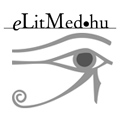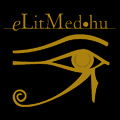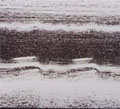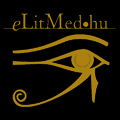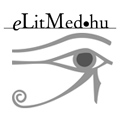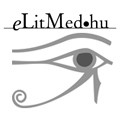The eLitMed.hu medical portal uses computer cookies for convenient operation. Detailed information can be found in the Cookie-policy.
Lege Artis Medicinae - 2002;12(03)
Content
[Localised and generalised osteoporosis in autoimmune polyarthritis]
[In this article, recent data are summarised on the osteoporosis occurring in autoimmune polyarthritis. Involvement of the bone in patients with autoimmune diseases occurs in two forms: localised (around inflamed joints) and generalised. Paraarticular osteoporosis has been known for a long time but new methods of bone measurements highlight the rate and cause of bone loss. Generalised skeletal changes in rheumatoid arthritis, in systemic lupus erythematosus and juvenile chronic arthritis have been proved by epidemiological studies. At present, there is no evidence supporting generalised bone loss in other chronic inflammatory diseases. Despite the fact that clinically apparent osteoporosis in autoimmune diseases is associated with severe health impairment and reduced survival rates, osteoporosis is still underdiagnosed and prophylactic strategies have yet to be found for this group of patients. These facts indicate calling specialists’ attention to the importance of osteoporosis in inflammatory diseases.]
[Psychiatric disorders associated with childbearing]
[The aim of this brief literary review was to draw attention to psychiatric disorders accompanying childbearing and to point out their importance. Authors begin with a historical perspective, the definition of concepts and the presentation of epidemiological data. It is followed by the mapping of multiple entwining etiological factors, then focus on the risc factors. Finally the principles are outlined to be followed in screening, prevention and treatment. Although these conditions develop quite frequently and have serious consequences regarding the individual (“unity of mother and child”) as well as the family and the society, their recognition still present difficulties. Following the establishment of the diagnosis, it is also important to start adequate therapy in time. The solution of the future would be to focus on prevention. This would be realized through the teamwork of would-be parents, health care specialists and researchers.]
[Cough syncope]
[Cough syncope is an infrequently diagnosed form of situational syncope. Most of the reported cases occurs among middle-aged or elderly overweight males, suffering from chronic obstructive lung disease. In our report of four cases we demonstrate the underlying mechanism of cough syncope. Hemodynamic recordings at the time of simulated cough attacks demonstrated the equalisation of the arterial and central venous pressures with consequent cerebral hypoperfusion. The first case illustrates the difficulties of the diagnostic work-up and the confounding effects of the co-existing arrhythmia. The second and fourth cases draw attention to the relationship between cough syncope and accidents. All four patients suffered from chronic obstructive pulmonary disease resulting from heavy smoking which seems to be the most important underlying factor of this syndrome.]
[A case of restrictive cardiomyopathy due to anthracycline treatment]
[INTRODUCTION - A case of restrictive cardiomyopathy with consecutive arrhythmia is presented which developed 20 years after adriablastin treatment CASE REPORT - A 30 years old women has already been treated for 3 years at an outpatient clinic for paroxysmal supraventricular tachycarcia (PSVT) and shortness of breath. All therapeutic interventions were ineffectual, since the patient refused to take the prescribed medicines because of feeling worse after taking them. This lack of compliance was first explained by vegetative neurosis, but later she was examined with the suspicion of dilatative cardiomyopathy and coronary heart disease. The patient was admitted to the Cardiology Intensive Care Unit with cardiogenic shock which developed after injection of propafenon that had been given due to PSVT. On admission sinus rhythm was seen, but later PSVT and non-sustained VT were recorded. Echocardiography showed diffuse hypokinesis, normal diameter of left ventricle and increased right ventricle pressure. Considering the low EF and the recurring high frequency arrhythmia, amiodarone treatment was introduced successfully. From the medical history of the patient it emerged, that in 1977, she underwent surgery due to neuroblastoma with consecutive combined chemotherapy containing adriablastin. CONCLUSION - It is presumed that the recurring arrhythmia was a consequence of restrictive cardiomyopathy resulting from anthracycline treatment. To prove the diagnosis of restrictive cardiomyopathy echocardiography, Swan-Ganz catheter insertion, coronarography and myocardium biopsy were performed to exclude other possible causes of restrictive cardiomyopathy and to verify the toxic effect of anthracycline.]
[Who will remain a member of the Hungarian Chamber of Physicians? - Reflecting on home birth in Hungary]
[The Hungarian Chamber of Physicians (HCP) has suspended the membership of two physicians since they provided medical care in planned home births. The idea of planned home births is vehemently opposed by the HCP declaring this practice as unprofessional and unethical. There is no scientific evidence from Hungary to justify the opinion of the HCP. Since data from Western European and North American countries suggest that planned home birth may be as safe as hospital birth for certain low risk mothers, an objective scientific research is suggested in Hungary to evaluate the risks of home birth versus hospital birth.]
1.
Clinical Neuroscience
Is there any difference in mortality rates of atrial fibrillation detected before or after ischemic stroke?2.
Clinical Neuroscience
Factors influencing the level of stigma in Parkinson’s disease in western Turkey3.
Clinical Neuroscience
Neuropathic pain and mood disorders in earthquake survivors with peripheral nerve injuries4.
Journal of Nursing Theory and Practice
[Correlations of Sarcopenia, Frailty, Falls and Social Isolation – A Literature Review in the Light of Swedish Statistics]5.
Clinical Neuroscience
[Comparison of pain intensity measurements among patients with low-back pain]1.
Clinical Neuroscience Proceedings
[A Magyar Stroke Társaság XVIII. Kongresszusa és a Magyar Neuroszonológiai Társaság XV. Konferenciája. Absztraktfüzet]2.
3.
Journal of Nursing Theory and Practice
[A selection of the entries submitted to the literary contest "Honorable mission: the joys and challenges of our profession" ]4.
Journal of Nursing Theory and Practice
[End of Life and Palliative Care of Newborns in the Nursing Context]5.
Journal of Nursing Theory and Practice
[Aspects of Occupational Health Nursing for Incurable Patients ]



